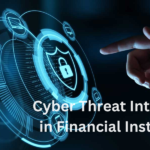Today, in the digital age and the increasing security requirements for sensitive data are a major issue for businesses, individuals as well as companies. As we continue to rely on AI technology and internet connectivity and the internet, the necessity of protecting important information from unauthorized access or data breach, as well as cyber attacks is never more crucial. This article will examine the significance of keeping an eye on sensitive information, provide the most effective ways to increase the security of data and offer useful information on how to protect the security of sensitive data. While fixing this issue, if you facing a problem regarding the synthetics monitoring Here is the solution how to get synthetics monitoring to work in new relic.
The Significance of Data Security
In a world where data is the mainstay of any business and businesses, protecting sensitive data is of the utmost significance. sensitive data includes personally identifiable data (PII) as well as trade secrets, financial records intellectual property, and all data that, if mishandled could result in serious implications for both entities and individuals. Data breaches can have devastating consequences. could include financial loss and reputational damages, as well as the impact of legal action, as well as losing trust of customers. So, adopting robust safeguards for your data is vital for protecting sensitive data monitoring.
Understanding Sensitive Data
The sensitive data may come in many types, including credit card numbers Social Security numbers, credit card numbers medical records, login credentials, and even proprietary business data. It is crucial to recognize and categorize sensitive information for the purpose of determining the right protection measures required to secure the data efficiently. Classification of data can help organizations prioritize security initiatives and distribute resources according to the need.
Risks and Threats to Sensitive Data
Data that is sensitive to the elements face numerous security threats and dangers in the world of digital. Cybercriminals use a variety of tactics that include hacking, phishing attacks, malware attacks as well as social engineering, for gaining access to crucial data. Furthermore, internal threats like angry employees or accidental data leaks can pose serious risks to the security of sensitive data. Recognizing these threats is essential when developing a thorough plan for data security.
The Role of Data Monitoring in Security
Monitoring of data plays an essential part in the protection of information that is sensitive. It is the ongoing monitoring and analysis of all data activity to identify anomalies, unauthorized access attempts, and other abnormal behavior. Through monitoring the data continuously organizations can detect the possibility of security breaches immediately and swiftly take steps to minimize risks.
Implementing Effective Data Monitoring Measures
For better data security companies should implement reliable data-monitoring strategies. These are the most important methods to think about:
Encryption and Data Masking
One of the primary methods to safeguard sensitive data is encryption. It transforms data into a non-readable format that makes the data unreadable to anyone else. Data masking is a different method involving replacing sensitive information with fictitious, but real-life data in non-production environments that ensure the protection of the information and privacy.
Access Controls and User Authentication
Utilizing strong access controls and mechanisms for user authentication is essential to prevent the unauthorized access of sensitive information. It is essential to use robust encryption techniques, and passwords that are multi-factor access control based on role, as well as regularly review access rights.
Regular Data Backups and Disaster Recovery
The routine backup of sensitive data and creating robust plans for disaster recovery is essential in limiting data loss and guaranteeing continuity of business in case of a security breach or system breakdown. Backups off-site as well as redundant storage systems offer additional security.
Employee Awareness and Training Programs
The employees play an essential part in ensuring the security of data. Training and educating employees about best practices for handling data in security, protocols for protection, and being aware of any potential risks can significantly reduce the chance of data loss caused by mistakes or negligence by humans.
Data Monitoring Tools and Technologies
Utilizing sophisticated data monitoring tools and techniques can help automate the method of identifying and responding to security breaches. Security intrusion detection systems (IDS) as well as Security information management and (SIEM) tools, as well as data loss prevention (DLP) software, can be useful devices for monitoring and analysis of activities in the field of data.
Conformity to Data Protection Regulations
Respecting data protection laws including regulations for data protection, such as the General Data Protection Regulation (GDPR) or the California Consumer Privacy Act (CCPA) is vital to maintaining the security of data. Companies must follow the legal guidelines and privacy guidelines, and seek consent from the individuals handling data that is sensitive.
Continuous Evaluation and Improvement
Security of data is a continuous process. regular evaluation and improvements of monitoring methods for data as well as security protocols as well as incident response strategies will be required to keep up with changing threats and to ensure that security measures are effective.
Addressing Emerging Threats
Technology advances and emerging vulnerabilities and threats are discovered. Being aware of the most recent developments and threats that are emerging technologies for data security is vital in implementing preventative steps to safeguard sensitive data efficiently.
Collaborative Approach to Data Security
Data security isn’t solely the job of IT departments. It is a team approach that includes all parties within an organization. Establishing cross-functional teams and fostering an environment of security consciousness and encouraging open communications is essential to creating a complete and solid data security strategy.
Read more about:
How Blockchain Technology Can Enhance Privacy and Security in the IoT Ecosystem
Web3 Technology The Future of Decentralization
Conclusion
To conclude, the protection of data that is sensitive is of crucial importance in the current digital world. Implementing efficient data monitoring strategies like security measures, encryption, access control, and backups of data, as well as employee training and the use of advanced technology is essential for keeping valuable information safe. If you take an approach that is proactive in protecting their data, businesses are able to reduce risks, safeguard their reputation and retain the confidence of their customers.
Read more about the following technlogies our expert covers many technology like:
Machine Learning Everything From Beginning to the Latest Trends and Developments
Artificial Intelligence Revolution Everything You Need to Know
If you have any topics or suggestion then contact us.
















